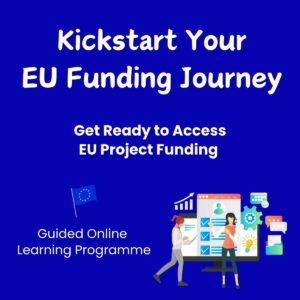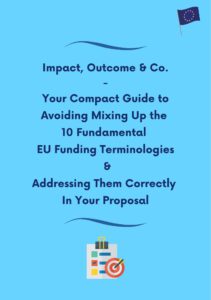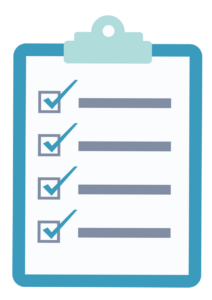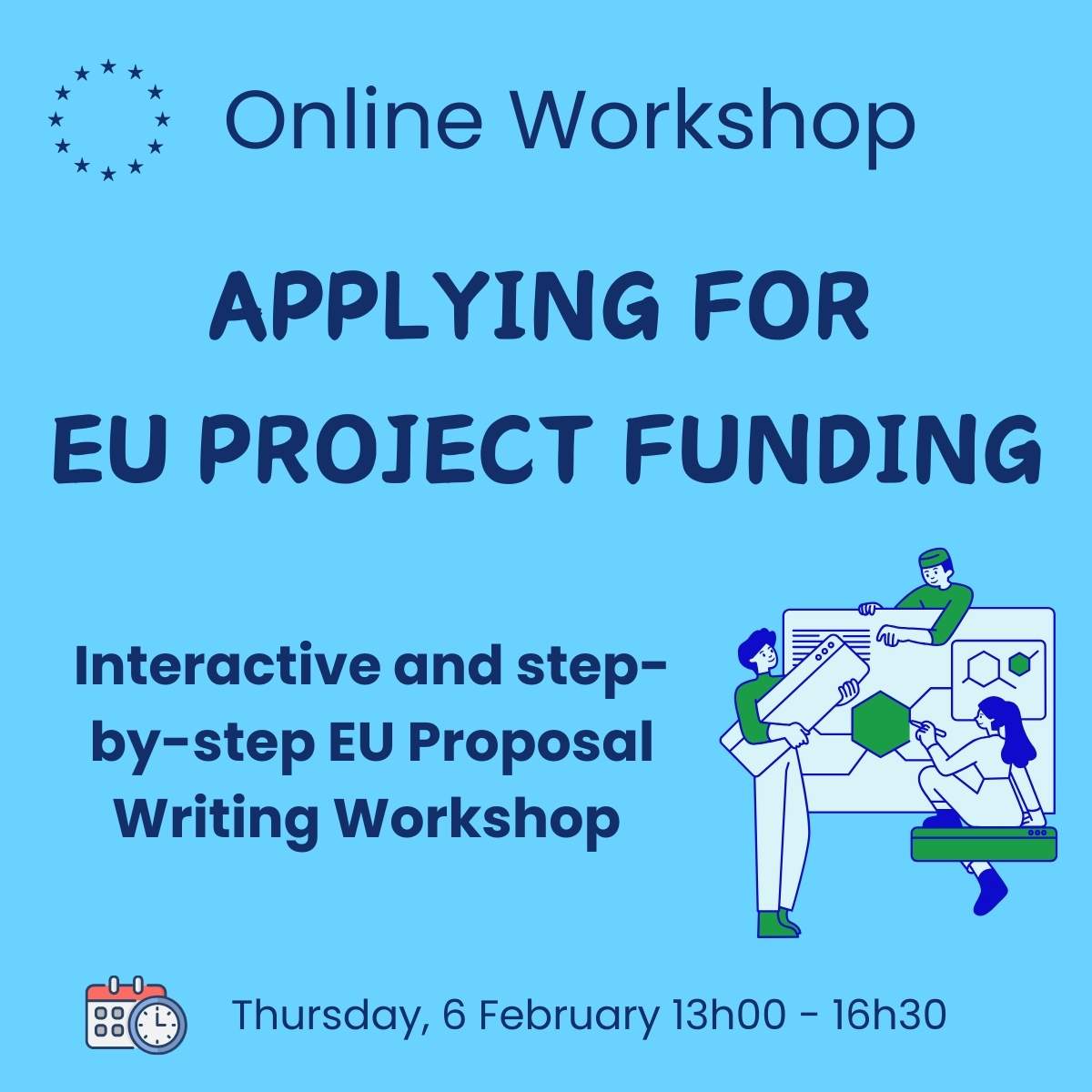
EU grants and nonprofits: 6 common misconceptions unpacked as opportunities
EU project funding for nonprofits: Discover 6 misconceptions that hold organisations back and how to turn them into opportunities for growth and impact.
Securing Horizon Europe funding can be transformative for your research or innovation project. However, the competition is intense, and writing a winning proposal requires more than just a good idea – it demands strategic thinking, clear communication, and last but not least, a good understanding of the evaluation process.
Horizon Europe is a highly competitive programme, receiving significantly more applications than its available budget can support. Hence, for getting funded, you need to obtain a top score. Aim to get as close as possible to the maximum score of 15 points. To boost your chances, you need to think like an evaluator – because success depends not just on the quality of your idea, but on how clearly and convincingly it aligns with the evaluation criteria. This mindset shift can be the key to turning a solid proposal into a fundable one.
When you submit your Horizon Europe proposal, the granting authority will allocate your proposal to independent expert evaluators. These external experts are tasked with assessing your proposed project. This includes evaluating your proposed project’s relevance to the requirements of the Call for Proposals, the expected impact of your planned project and the soundness of its implementation plan. The selected experts are typically subject-matter experts who evaluate often a high number of proposals in a relatively short period of time.
The evaluators follow strict evaluation criteria and scoring systems as outlined in the Horizon Europe Work Programme’s General Annexes. In addition, general considerations should not be overlooked: For example, from a communication standpoint, evaluators will be looking for clarity, coherence and a logical flow of information. Keep in mind that they are neither required nor expected to read between the lines. Your proposal must clearly present the necessary information, exactly where and how the evaluators expect to find it.
Thinking like an evaluator means stepping out of your role as the passionate researcher or innovator, into the mindset of someone who has to critically, quickly and fairly judge your proposal based on a predefined set of criteria. How to approach this in practice:
Evaluators must often review multiple proposals in a limited time. Overly complex and jargon-heavy writing can dilute your key messages. Use plain, professional language. Structure your proposal with clear headings and coherent flow. Keep in mind that the evaluator may be an expert in the broader field, but possibly doesn’t have specialised knowledge of your project’s particular niche.
Tip: Incorporate visuals (such as tables, charts and diagrams) to support complex explanations, and enhance the readability by breaking up dense text, e.g. into shorter paragraphs.
Horizon Europe proposals are judged primarily on three criteria: Excellence, Impact, and Quality and efficiency of the implementation. In the context of your very specific project, address each of them accordingly in your proposal:
Apart from these overall requirements, concrete expectations are outlined directly in the application form. Each section is subdivided. For instance, the Excellence section includes a sub-section for “Objectives and ambition”. The form provides detailed instructions on what to include in this part, along with a recommendation about the number of pages for the sub-section as a guideline. This suggested length serves purely as an orientation and is not a strict limit. It will help you stay within the overall maximum page limit for the complete proposal, which may not be exceeded – any excess pages will be removed, and evaluators will not see the information they contain!
In terms of content for the “objectives and ambition” sub-section, you are expected to clearly state your project’s objectives, ensuring they align with the Horizon Europe work programme and are both measurable and achievable. You should also explain how your work goes beyond the current state-of-the-art by introducing novel, ground-breaking elements. Furthermore, indicate the project’s maturity in terms of research and innovation, including relevant Technology Readiness Levels, and support your claims with comparisons to existing market solutions, patents, or reference publications where applicable.
Tip: Use the exact wording from the evaluation criteria in your text. This helps evaluators quickly identify that you are directly addressing each required point.
Evaluators are asked to spot weaknesses. Think like an evaluator and try to identify potential red flags in your proposal and address them accordingly.
Ask yourself:
Don’t leave room for assumptions.
Tip: Ask a colleague who is unfamiliar with your project to check your proposal very critically to simulate an evaluator’s perspective.
One of the most common reasons for failure of a proposal is a weak Impact section. And for ‘Innovation Actions’, the Impact criterion carries even more weight in the evaluation than the other two criteria, and more than it does in ‘Research and Innovation Actions’. You need to prove your project will achieve something meaningful beyond the project itself.
Evaluators are looking for:
Tip: Avoid vague statements like “this research will help society.” Be specific: Who exactly benefits? How? When?
Don’t just mention the expected impacts, but translate them into concrete Key Performance Indicators (KPIs). Evaluators expect a clear demonstration of how you will measure success and provide evidence that your project contributes meaningfully to addressing the issues targeted by Horizon Europe funding.
Evaluators of Horizon Europe Pillar 2 consortium projects (under the thematic Clusters) are looking for more than academic excellence, they need to see that your project addresses real societal challenges and aligns with EU policy objectives. Be explicit about how your proposal contributes to key Horizon Europe Destinations – strategic impact areas – defined in the Work Programme. You should also link the expected outcomes to the relevant EU policies and strategies referenced there. For example, if your project focuses on sustainable agriculture, demonstrate how it supports the European Green Deal, Farm to Fork Strategy or resilience in food systems.
This policy alignment helps evaluators clearly understand the broader relevance and value of your work, enhancing the prospect of a high score.
Evaluators don’t read your proposal’s individual parts in isolation, they look for coherence. If you describe an objective in the Excellence section, make sure it’s reflected in your work plan and budget. If you highlight policy influence of your planned project in the Impact section, then you should show in the Dissemination and Communication part how you will reach and engage relevant policy-makers.
Other examples for ensuring consistency:
In Pillar 2 projects (i.e. consortium projects under the thematic Clusters), evaluators expect to see the synergies between the partners of the consortium. They assess whether your consortium has the right mix of expertise, geographic diversity and sectoral representation to deliver on the project’s ambitious goals. Clearly describe each partner’s role and explain why this specific consortium composition is best suited to solve the addressed challenge.
Show that you understand who your stakeholders are and how they’ll be involved in the project. Initiatives such as co-creation workshops, pilot implementations and policy dialogues that demonstrate active end-user involvement and ensure practical applicability of outcomes will be more favourably assessed.
One final point about presentation: a well-organised, professional-looking proposal A well-organised, professional-looking proposal makes a good first impression. Consistent formatting, clear layout, uniform fonts and error-free language signal care and competence, and create a trustworthy impression that evaluators may associate with the quality of your project implementation.
Leave enough time before submission for proofreading and layout checks, ideally by someone who’s not involved in the writing process to benefit from a fresh and objective perspective.
A common mistake among applicants is writing the proposal for themselves or their peers. But in a Horizon Europe proposal, your actual audience is the evaluator. Thinking like an evaluator from the start doesn’t only improve clarity and focus but significantly increases your chances of success.
Your evaluators are looking for consortia that:
Ask yourself: If you were the evaluator, would you want to fund the project? And would you trust this consortium to deliver what is being promised in the proposal?
By taking on the evaluator’s perspective, your proposal goes beyond promises and becomes truly persuasive – and you get a big step closer to Horizon Europe funding success.
—
Need support with your Horizon Europe proposal? Whether you are looking for an expert review, tailored feedback, or full proposal-writing assistance, feel free to get in touch to discuss the best way I can help.

Author: Astrid Mechel
https://eufundingconsulting.eu
Hello, I am Astrid Mechel and I work (for the most part) with small and medium sized organisations who aim to access EU funding. It is my goal to help discovering suitable EU project funding possibilities and to provide support to submit a high-quality grant application. My main thematic focus is on grants for research and innovation, environmental sustainability as well as on social inclusion and participation.
Read more articles here:

EU project funding for nonprofits: Discover 6 misconceptions that hold organisations back and how to turn them into opportunities for growth and impact.

Applying for EU funding can be a complex and challenging. This article offers 12 practical tips to help you avoid the most common stumbling blocks.

This article presents insights for first-time applicants for project funding from the EU LIFE Programme, common challenges and practical tips for applying.
Online Workshop

Interactive Live Workshop
On 22 May 2025 from 13h00-15h30
Registrations are closing soon

Curious about EU funding and how it could support your next project? Join the new live programme round for a compact and easy-to-follow way to get started with EU funding.
Key Terminologies – Application Guidance

This guidance compares and compare and clarifies the 10 key terminologies within an EU funding application. How should you address them in your proposal, and what kind of information belongs to which one of them?
Online Workshop on 6 November!

The workshop “Getting Started with EU Funding” is for participants with no or very limited experience in EU funding. Discover what kind of projects the EU is funding, the requirements and how you can apply for funding in your thematic field.
EU Funding Checklist

Do you have a new project idea and are wondering if EU funding could be available for your project?
This checklist will guide you through the most important questions to be considered when applying for EU project grants and includes some further suggestions how you could adapt your concept to be more in line with EU expectations regarding fundability.
Get the brand new upgraded guidance booklet (free offer):
Your compact guide on how they work and how your organisation can apply for funding

Find out which 10 EU programmes offer grants for projects in the social sector, what the conditions for funding are and how you can apply.
Online Workshop

Interactive and step-by-step EU Proposal Writing Workshop
On 6 February 2025 from 13h00-16h30